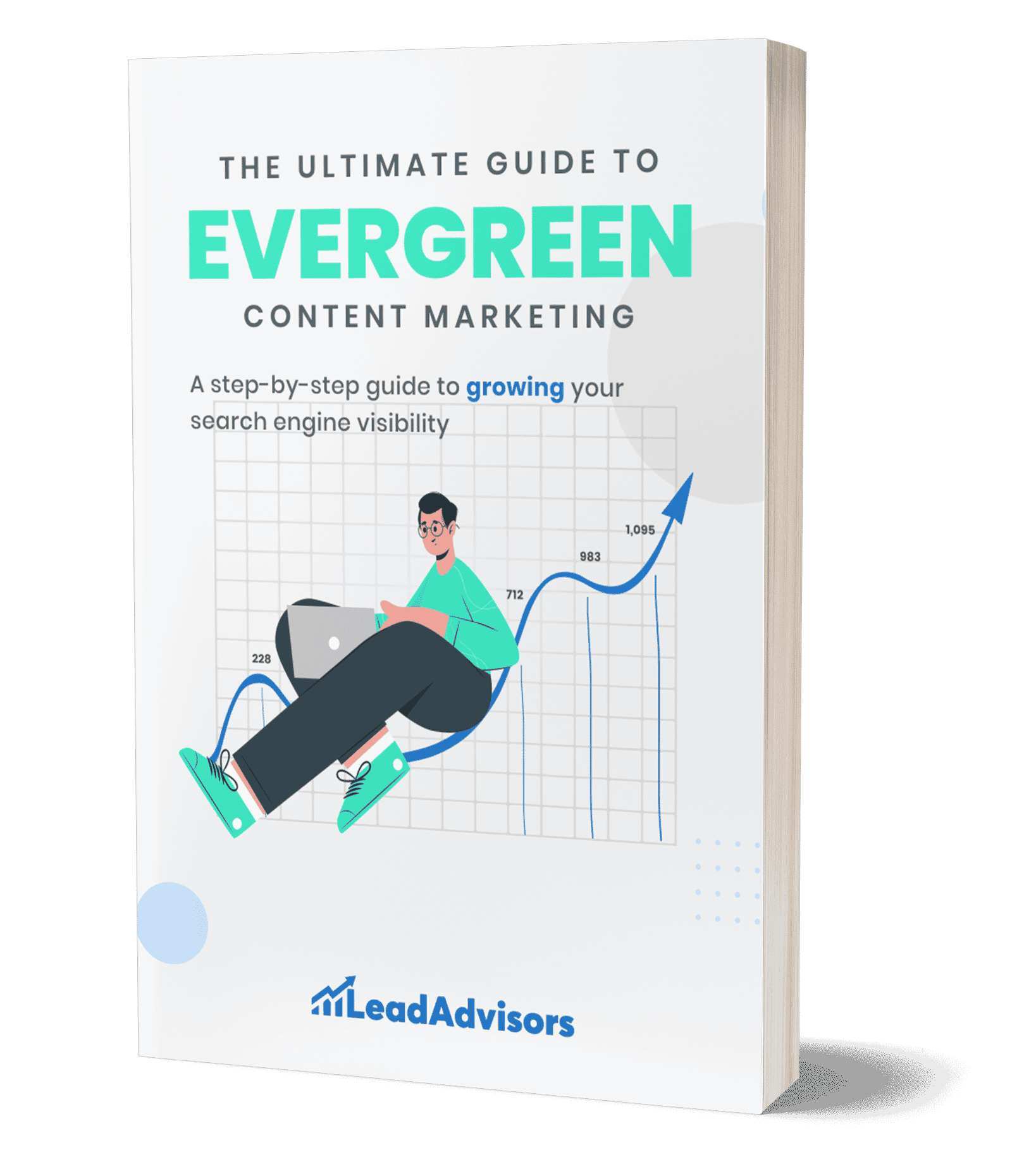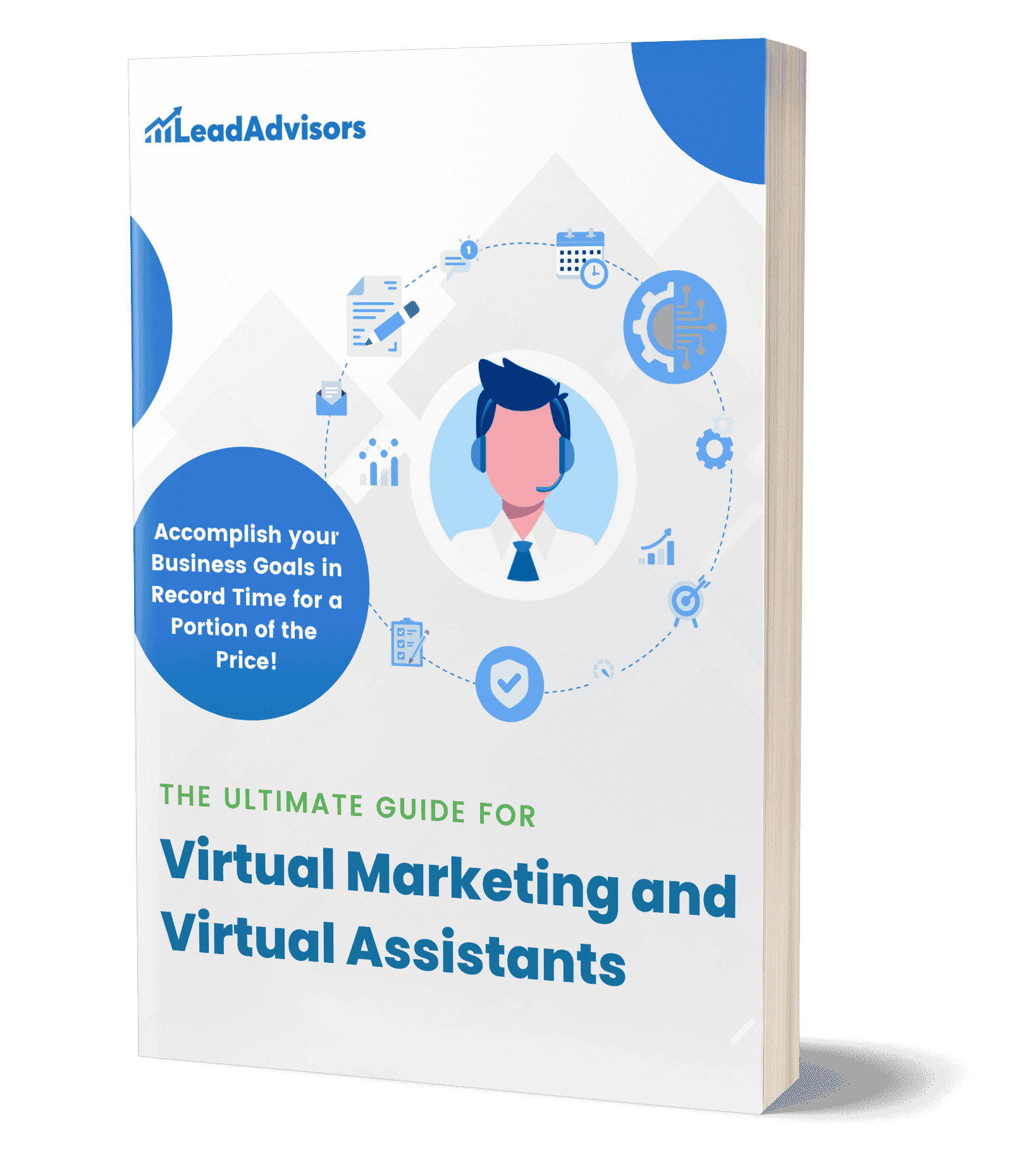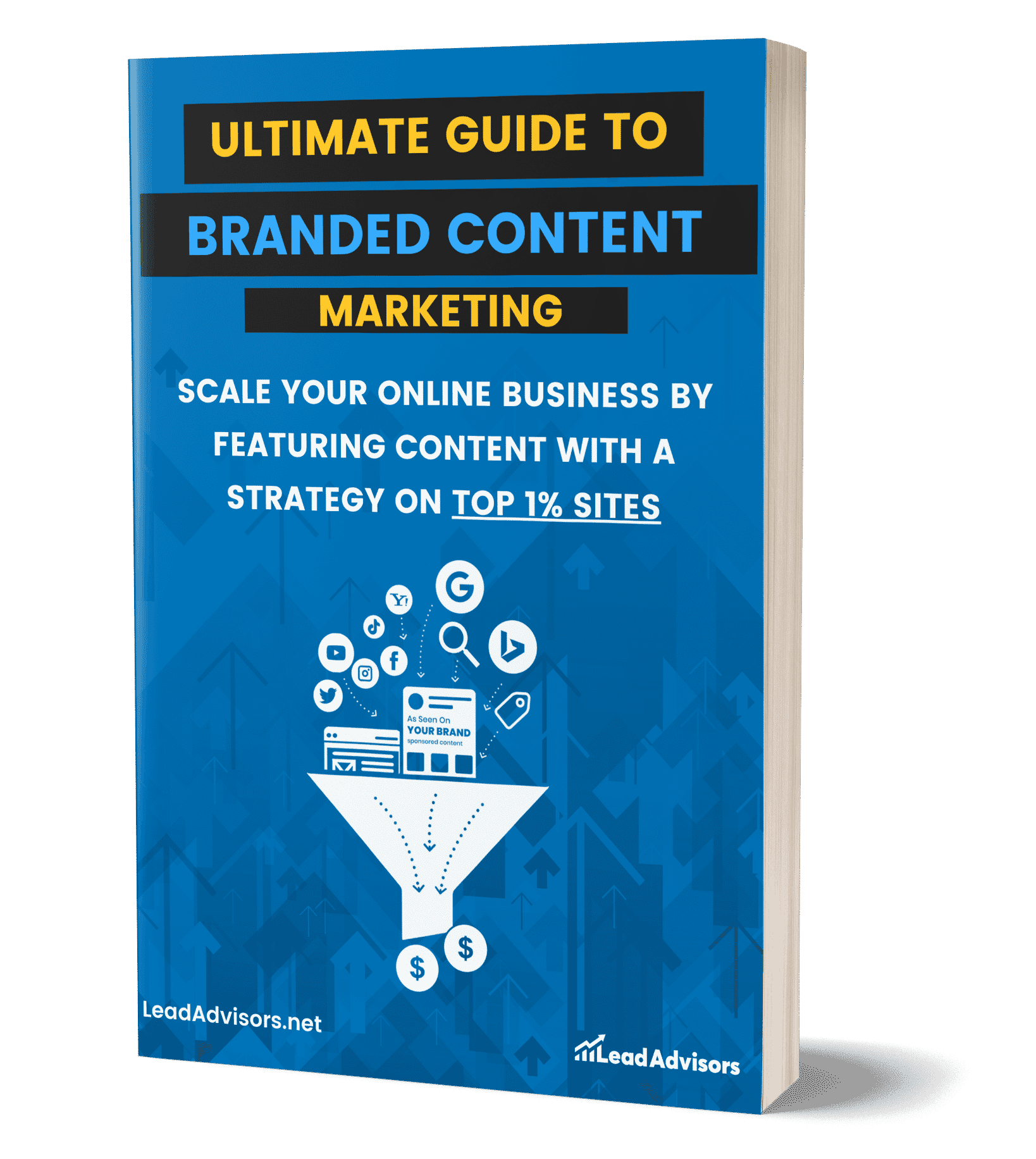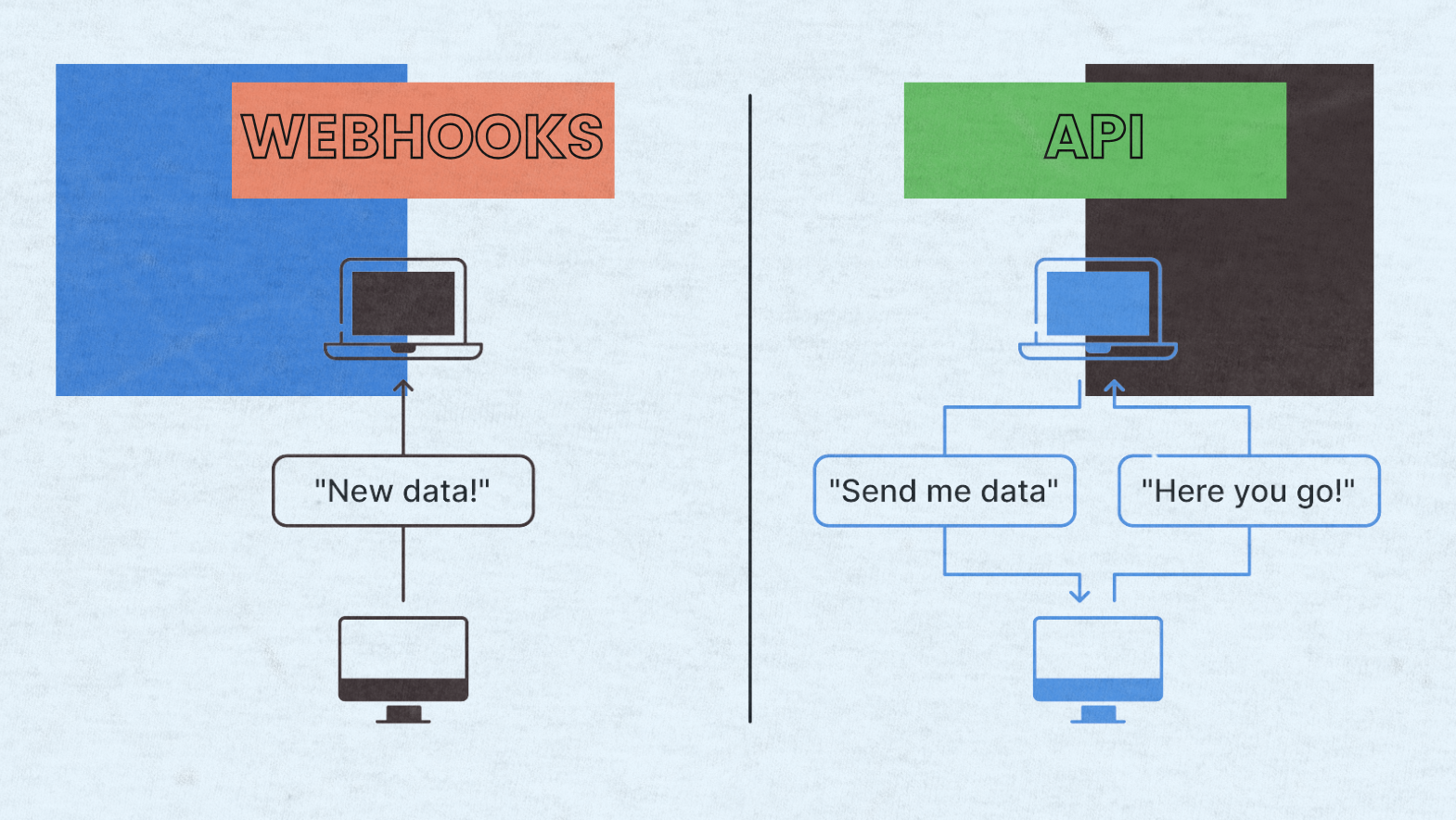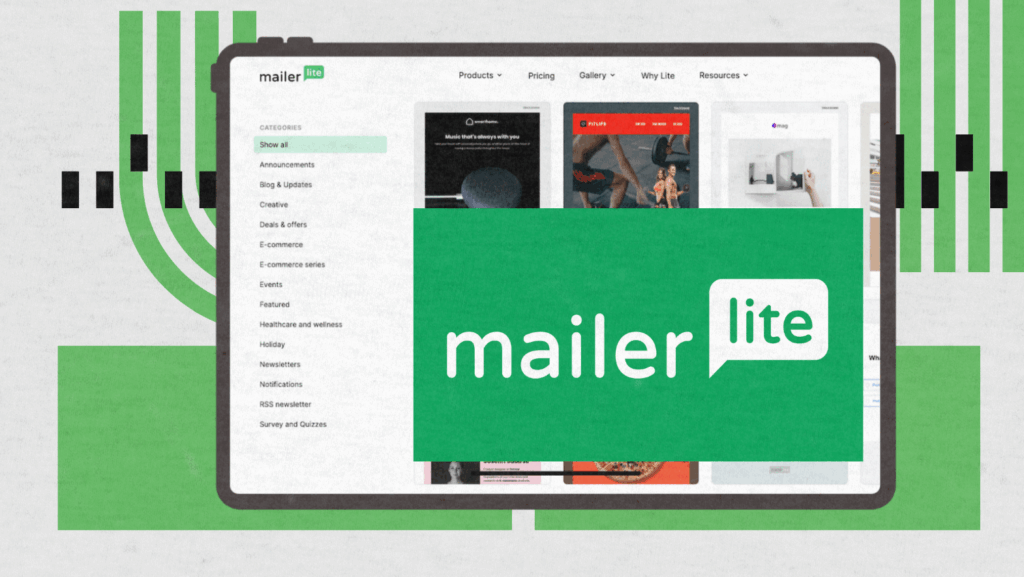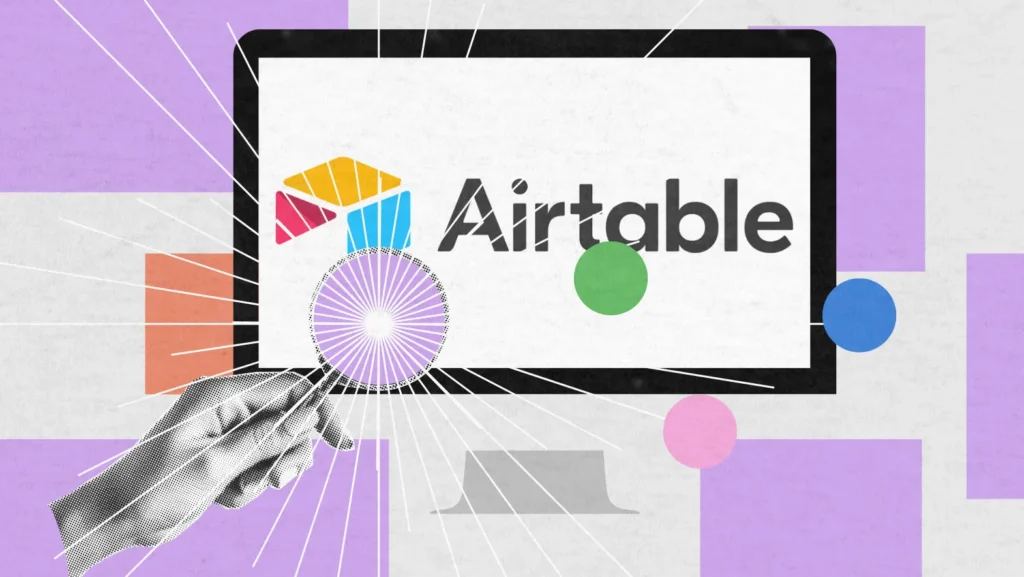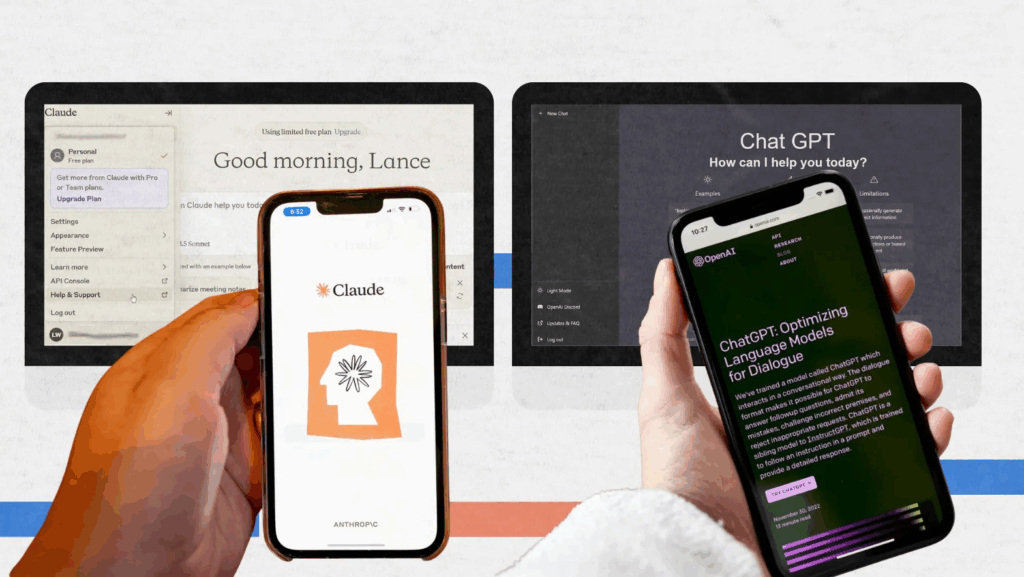Answer Engine Optimization (AEO) is more than marketing’s latest buzzword – it is yet another paradigm shift in how SEO is perceived. How well do you remember the time when we would respond to questions with, “Just Google it”? Well, now it might go something like “Alexa, what’s the best coffee shop near me?” We are no longer typing in keywords — we’re asking questions out loud, and we expect instant, accurate answers without bothering to click a link.
That is because search is changing rapidly. With zero-click results, voice-based search solutions, and AI-based summaries, the original-fashioned search engine results pages (SERPs) are beginning to show their age. Users nowadays want answers, not options.
And that’s a big deal to us, whether we are marketers, SEO nerds, or content creators. If we are not crafting our content to be the answer, we are letting many opportunities pass us by. The game is changing, and if we want to remain in it, Answer Engine Optimization is the only way we can.
What Is Answer Engine Optimization (AEO)?
Here’s a breakdown: Answer Engine Optimization (AEO) is the process of crafting your content so that it is the most relevant content to return when people ask user queries on search engines, voice assistants, chatbots, or AI platforms. While traditional search engines list pages according to ranking, AEO is about choosing your content as the top direct answer—no clicking necessary.
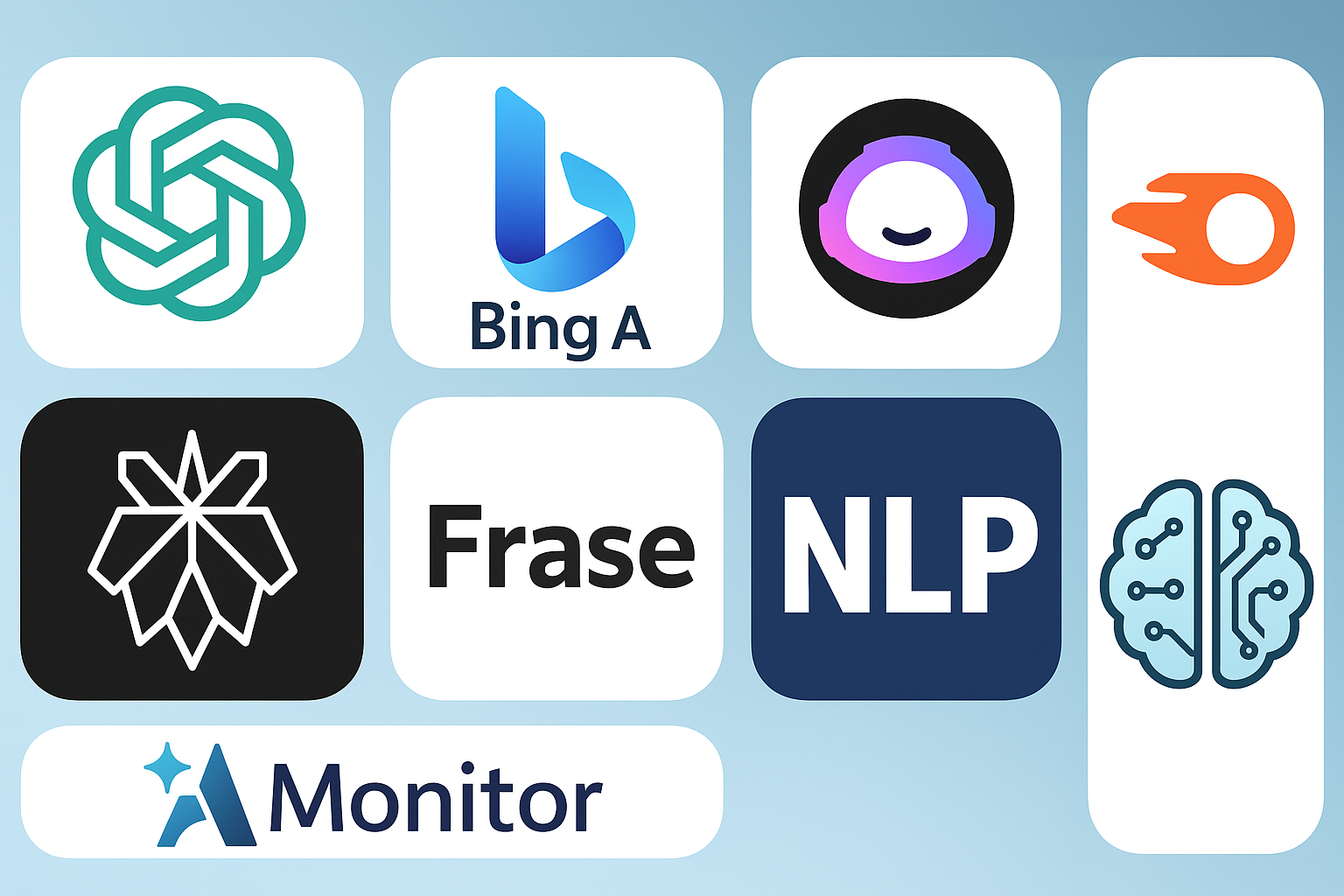
Here’s a better way of looking at it: Traditional SEO strategies ask the question, “How do I rank on the first page of Google?” AEO is posing the question, “How do I become the answer out of the gate?”
You’ve probably seen it in action already. Those featured snippets at the top of search engine results? That’s AEO. Voice search assistants will give you an answer before you finish your coffee. Yup, AEO again. Even those fast, smart responses from ChatGPT or Google’s AI Overviews—they’re powered by content that’s been optimized for providing direct answers, not just ranking.
Perhaps you’ve already seen it in action. Those featured snippets at the top of search engine results? That’s AEO. You’ll get your answer from voice search assistants before you even finish your coffee. Yup, AEO again. Even those quick, smart responses from ChatGPT or Google’s AI Overviews — they’re powered by content that’s been optimized for providing direct answers, not just for ranking.
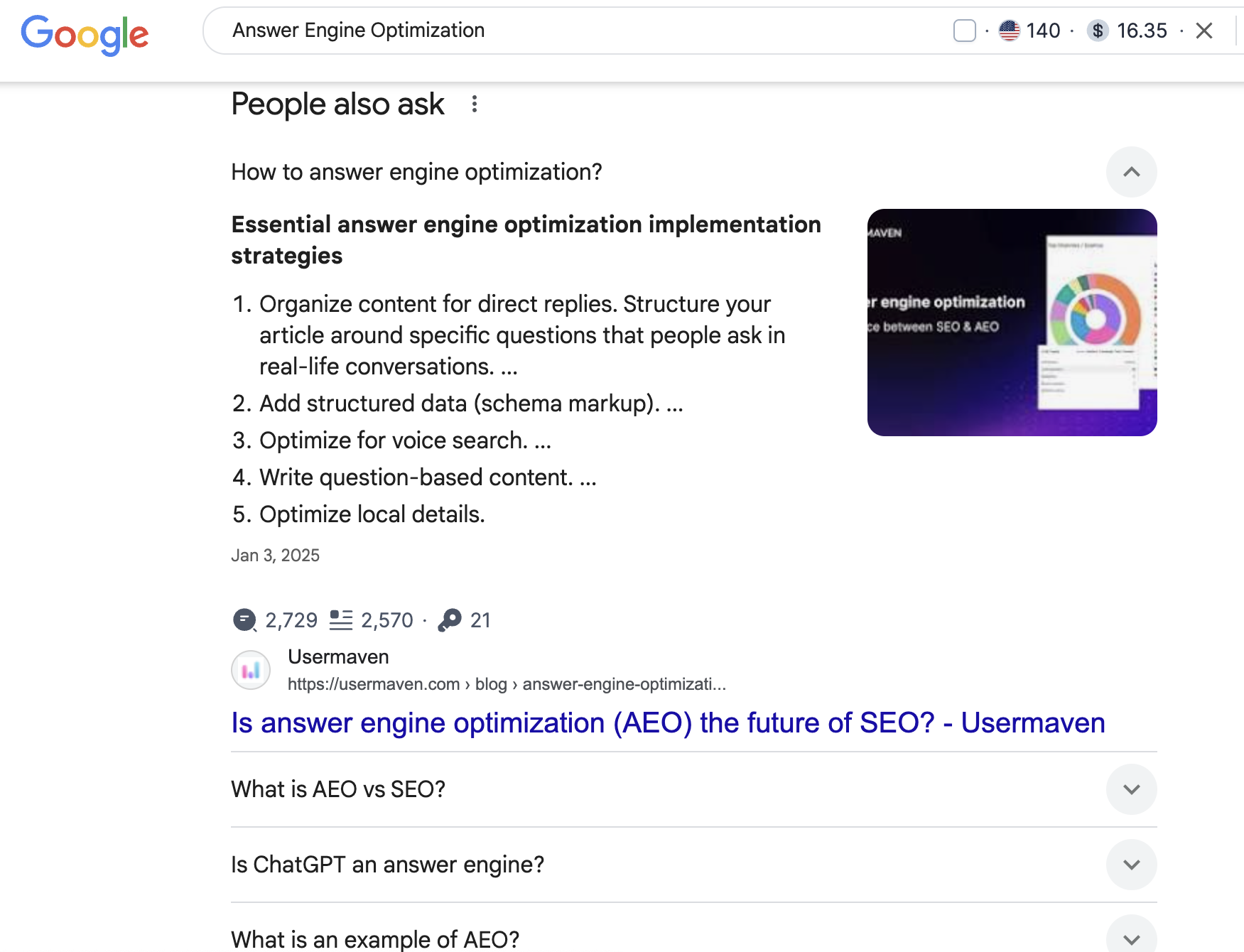
What Are Answer Engines?
So what are answer engines, exactly? Consider them your shortcut to instant information. They present you with direct answers rather than sending you off to a list of links on search engine results pages. No fluff, no hunting. That syncs up with how user behaviors are developing, as people want fast, relevant answers.
Two Main Types of Answer Engines
1. Generative AI Bots
These are powered by sophisticated machine learning and large language models to produce in-depth, conversational responses to the structure of your search queries.
ChatGPT (OpenAI) – Your AI pal who is trained on tons and tons of data and is a little long-winded and amicable (you are literally reading this thanks to ChatGPT).
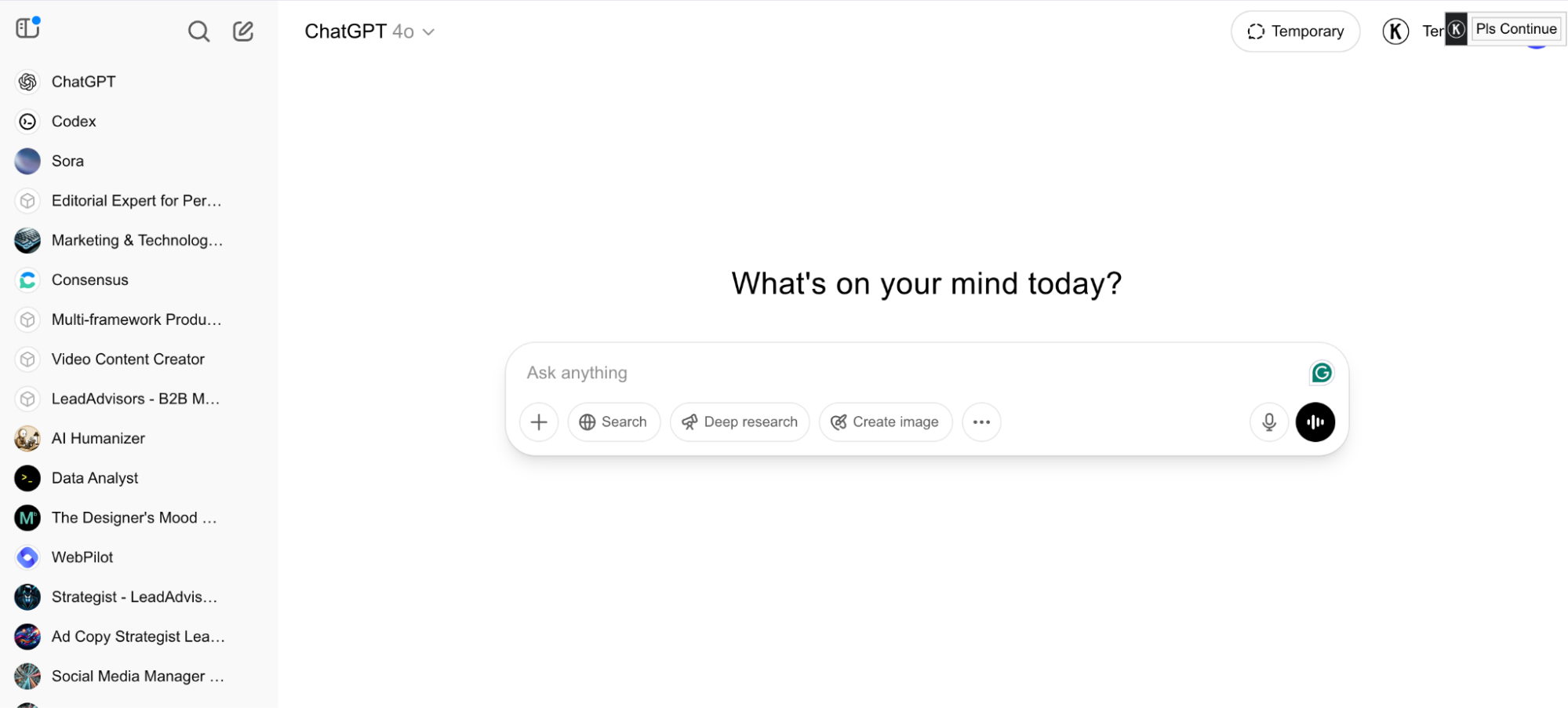
Gemini (Google) – This generative AI is the successor to Bard and delivers real-time and personalized assistance in products like Gmail, Docs and Search, drawing on your user search queries.
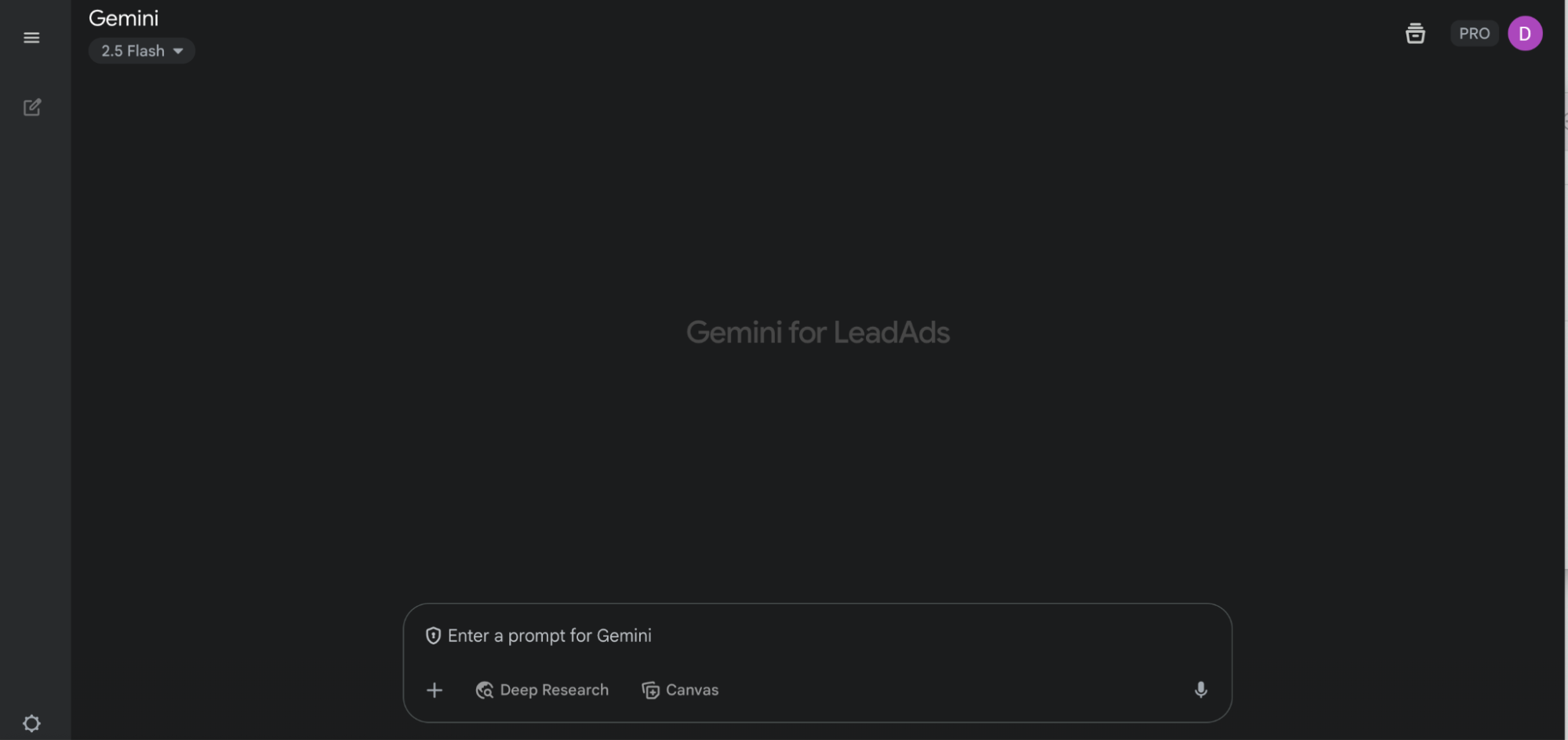
Perplexity – This is AI answer engine providing referenced, well-sourced in-depth information. It’s like Google but with a built-in digital marketing research assistant.

Claude (Anthropic) –Ethical dialogue optimized open AI. Good for providing accurate information when asked difficult user queries.
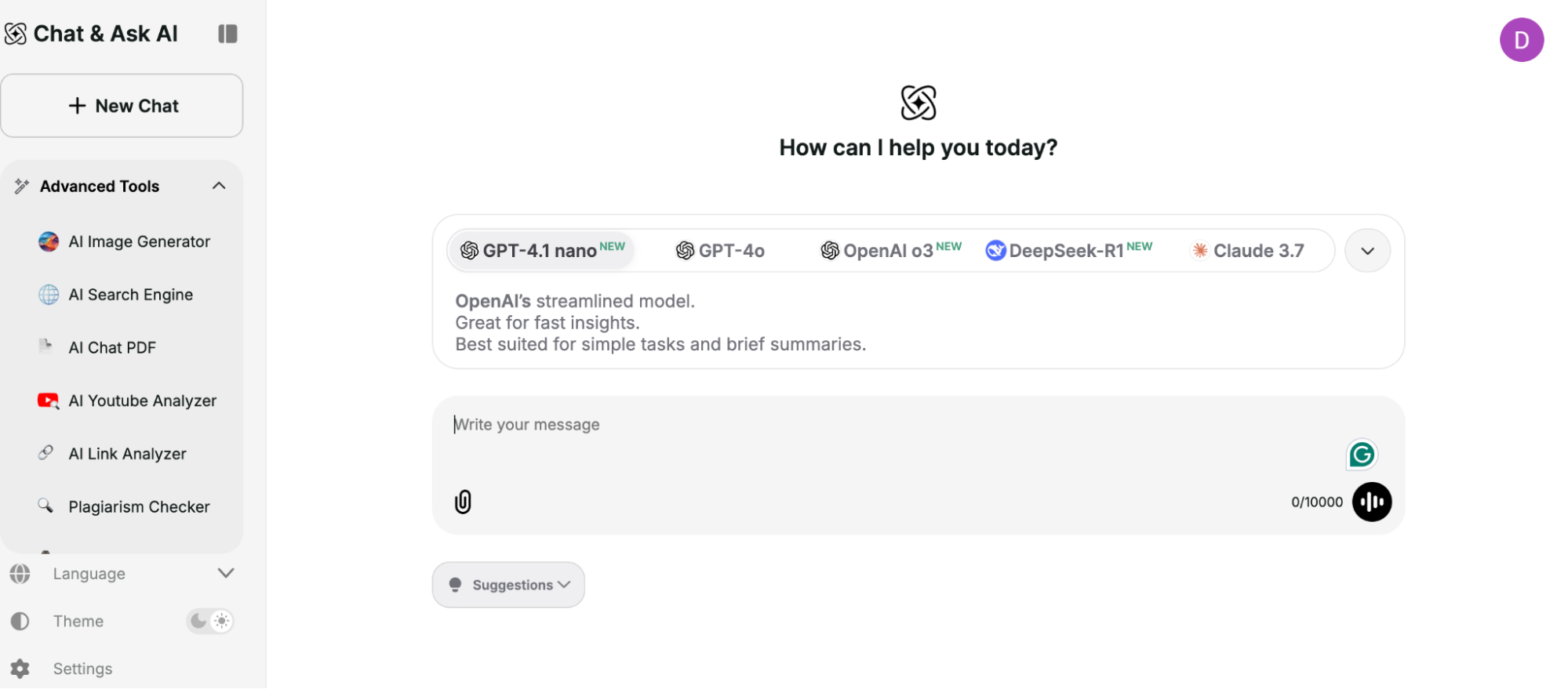
2. Voice Search Assistants
Those tools are fully integrated into all of your daily processes — your phones, your smart speakers, your smart TVs, even your cars. They use voice recognition technology and artificial intelligence to interpret and answer spoken queries immediately.
Siri (Apple) – The original voice assistant has been offering iPhone users directions, reminders, and hands-free search results since 2011.

Alexa (Amazon) – Your smart home manager. Whether you’re turning on lights, ordering groceries, or asking trivia, Alexa delivers relevant answers using natural language.

Google Assistant – Using the power of Google’s search algorithms, it can answer all of your questions and communicate with you through spoken queries.
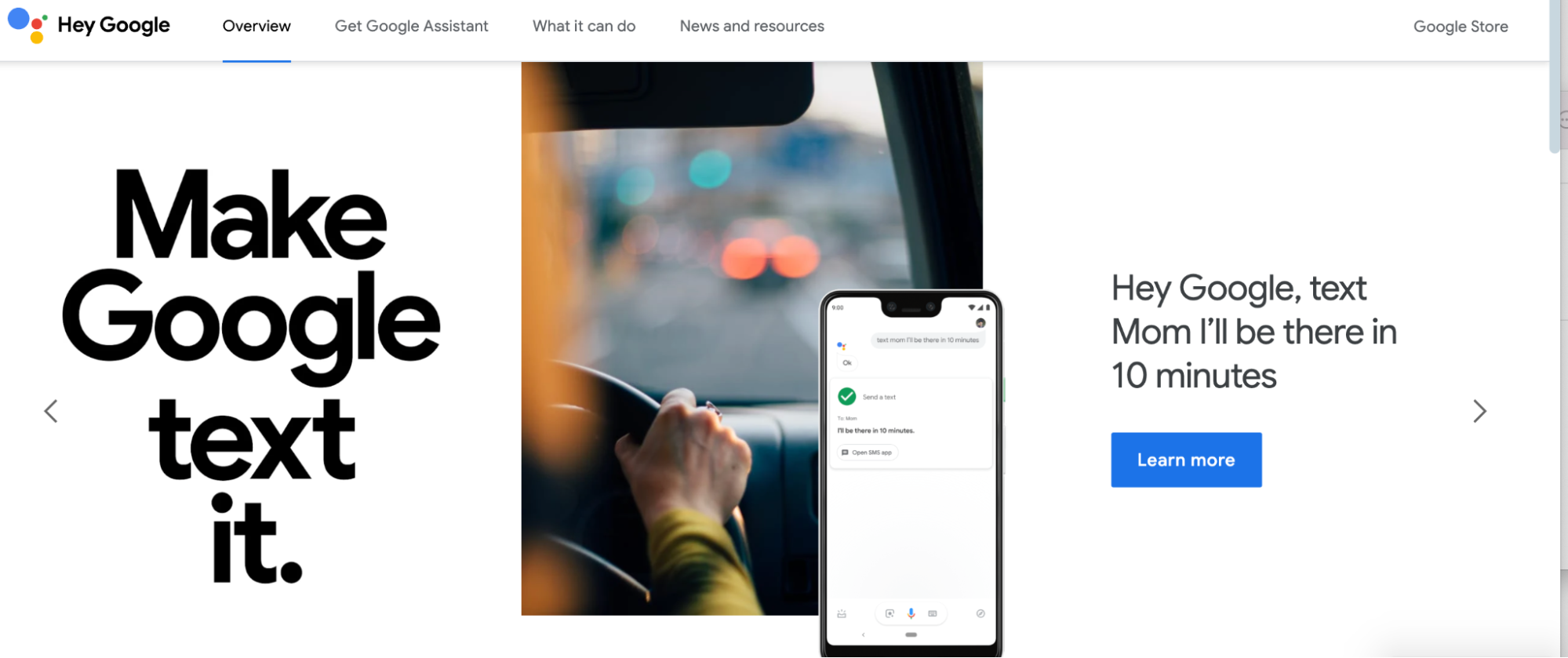
Answer Engines vs. Traditional Search Engines
| Feature | Answer Engines | Traditional Search Engines |
| Output | Direct, conversational answers | List of clickable links |
| Interface | Chat or voice-based | Web-based |
| User Intent | Instant resolution | Exploration and discovery |
| SEO Focus | Contextual, semantic, answer-driven | Keyword-focused, link-heavy |
| Examples | ChatGPT, Gemini, Siri, Alexa, Claude, Perplexity | Google Search, Bing, Yahoo |
Why This Matters: The Adoption Surge
-
41% of adults are currently using voice search assistants daily
-
More than 110 million people downloaded ChatGPT’s app in the months after its introduction.
-
Over half of Gen Z would rather use AI search tools for answers than search engines as we know them.
That’s massive. It means that the people using it are not just searching — they are asking. Answer engines are increasingly being used to meet users’ expectations and provide the most relevant content in real time.
That’s massive. It means the people who are using it are not just searching—they are asking. The usage of answer engines is growing to fulfill users’ expectations of having the most accurate information available at their fingertips.
Why the Shift to Answer Engines Is Inevitable
Let’s face it: we’re not the most patient people. We like our coffee fast, our streaming ad-free, and our answers no later than now. That’s precisely what Answer Engine Optimization is the new king of.
AI + NLP Are Changing the Game
It’s the moment where artificial intelligence (AI) and natural language processing (NLP) felt like they were being taken to the next level. Search algorithms are now seeking more than literal words or phrases and not just prompting your search term in relation to relevant articles or websites. They know that “best time to post on Instagram” really means, “What time is my post going to get the most engagement?” The focus on search intent: What answer engines are built on.
Zero-Click Is the New Normal
Ever wonder how many times your query is answered before you even click on a result? This is what is known as zero-click behavior, and it is starting to look like the new normal. No more scrolling down for blog value or following the trail back to your land – They are scooping up the tiny, relevant answers and kicking sand in your face on the way past. 57% of mobile search results lose you opportunity after opportunity, when they close without a click (Source: Semrush)
Goodbye Page-Hopping, Hello Instant Gratification
Generative AI responses — like the ones created by ChatGPT or Google’s AI Overviews — can lead to a user “sticking,” instead of bouncing from page to page. Search is now turning less ‘adventure seeking’ and more ‘conversational’. That’s a win for the user, on the other hand, but it completely shifts the landscape in terms of what we know about traffic, engagement, and even the site structure as well.
What This Means for Your Metrics
What does that do to your page views, time on site, or conversions if your user gets the answer in the SERPs or AI systems?
Here’s the truth:
-
Some possible side effects: You could see less organic traffic.
-
However, users are also higher up the funnel.
-
And what if your content is the solution? You are building trust, authority, and influence in the places that matter.
Answer engines don’t kill engagement; they enhance user experience by promoting less clicking around and more reading of valuable insights. The new gold standard is not visits but visibility, and optimizing content work in that reality is how we stay in the game.
AEO vs. SEO: Key Differences
Alright, let’s clarify a few things: Answer Engine Optimization (AEO) is not a replacement for traditional SEO strategies, but it is a game-changer!
Think of it like this:
SEO lists you as the potential answer, while AEO allows search engines to recognize your content as the answer automatically. They have opposite agendas and complementary gifts.
What They Have in Common
But let’s start with a few of the basics before we dive into the differences between AEO and SEO… Because actually, they share a few things in common:
-
Search intent alignment – You want to align with your target audience’s true search desire!
-
Quality content – It ain’t your fluff piece, folks. Your content needs to perform to meet the demands of search engines and AI software.
-
Trust signals – Backlinks, citations, and authority DO STILL count for something. A lot.
Where They Diverge
But here’s where AEO starts to stand out:
-
SEO = Wrestling for attention above the fold of an array of links
-
AEO = Aspirational “everything that needs to be” answer (spoken/AI) / featured snippet
And that fundamentally shifts how we write, structure, and distribute our content.
AEO vs. SEO at a Glance
| Element | Traditional SEO | Answer Engine Optimization (AEO) |
| Primary Goal | Rank high on search results pages | Be selected as a direct answer |
| User Experience | Encourage clicks to explore content | Provide value without needing a click |
| Content Structure | Keyword-optimized, long-form, link-rich | Short, concise, context-rich, FAQ-style |
| Best Fit For | Google Search, Bing, Yahoo | AI tools (ChatGPT, Claude), voice assistants (Siri) |
| Success Metric | Click-through rate, dwell time, SERP ranking | Featured snippet placement, AI citations, voice reads |
| Tone | Informational, persuasive, and often sales-driven | Conversational, clear, answer-first |
So yeah, if Search Engine Optimization is the long game for visibility, AEO is the expressway to relevance. And guess what? We need both in this AI-driven search in the future.
How AEO Works: Behind the Scenes
You would expect: a person says, “Hey Siri, what’s the healthiest oil to cook with?” Within seconds, the voice assistant responds with, “Health experts say olive oil is one of the best because it features healthy fats that are good for the heart.” Boom. Nursing was out of the question; you need an answer,” he said.
But what did Siri know to say? Let’s break it down.
Step 1: Understanding the Question
Answer engines don’t simply hear words—they decrypt explicit intent. That’s where Natural Language Processing (NLP) and machine learning come in. They allow tools like ChatGPT or Google Assistant to understand the user’s behavior behind the question.
So, how would I go about advising people about the healthiest oil to cook with? The system does not look only for exact phrases. It’s reading that search intent: “This person is searching for no-nonsense, health-led guidance. Quick. Credible. Concise.”
Step 2: Finding the Best Answer
After that, the engine looks through its knowledge base (which includes everything from structured content to indexed pages and sometimes even real-time data). What’s it looking for?
After that, the engine searches its web base, which contains everything from structured data to Indexed pages and sometimes even real-time data. What’s it looking for?
-
Clean hierarchy of content: Headings, bullet points, and FAQ sections
-
Brevity: No fluff, no jargon
-
High trust signals: Author reputation, Domain credibility, and citations
This is where technical SEO, whether structured data or site structure, comes in. It helps search engines to immediately understand whether or not your content contains supporting relevant content, such as definitions, how-tos, and product comparisons.
Step 3: Why LLMs Choose Certain Sources
Here’s the secret sauce: Services like ChatGPT are trained on billions of tokens from all over the web, but they’re picky.
They prioritize:
-
Authority – Steady sites that provide accurate information dissemination
-
Clarity – The Straight-To-The-Point Posts
-
Relevance – Content that serves commercial intent or informational questions with accuracy
So if your blog post is made up of an H2 that reads “The Best Oils for Healthy Cooking” followed by a short, research-based paragraph, you are the perfect source for large language models to be quoting.
Answer engines operate the way that a genius librarian would. If you’ve already crafted a highly structured, widely cited piece of content that’s also laser-focused on answering user queries, then it’s the one they’ll take off the shelf first. And that’s really the essence of AEO — just being that default response.”
Core Pillars of AEO Strategy
So now that we have an Answer Engine Optimization definition and why it’s important to invest time in it, how do you? These seven pillars are the heart of a smart content strategy — think of them as your blueprint to becoming the go-to answer in search engines, voice assistants, and in AI-powered applications.
Understand and Map User Intent
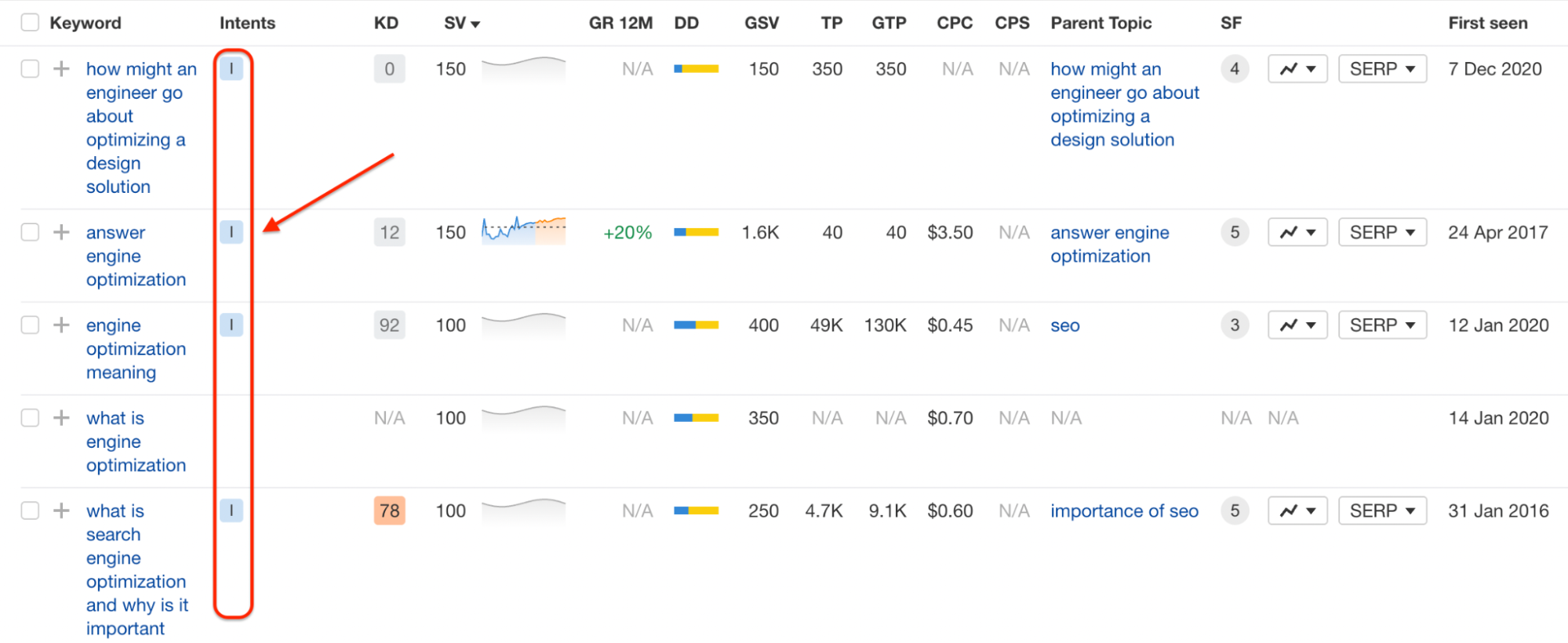
If you don’t understand why someone is asking a question, you’ll never deliver user satisfaction. That’s why mapping user intent is step one.
It’s not just about keywords—it’s about search behaviors and context.
Common intent types:
- Know – “What is Answer Engine Optimization?”
- Know Simple – “AEO meaning”
- Commercial – “Best AEO tools”
- Transactional – “Buy AEO course online”
Some queries show fractured intent, meaning different user goals are packed into one phrase. Your job? Answer all of them with layered, relevant content—starting with a direct takeaway and expanding into deeper info.
Helpful tools:
- MarketMuse – For modeling topics and user expectations
- Google Search Console dashboard – Tracks real user search queries
- Ahrefs – Uncovers keyword variations and search engine results behavior
- Internal chat logs – Your direct line to real user questions
Conduct Question-Based Keyword Research
These days, people don’t just search keywords—they ask full-on questions. Instead of typing “AEO strategy,” they’re more likely to type or speak, “How do I optimize content for answer engines?” That’s why question-based keyword research is a must, and Ahrefs makes it super easy to do.
Start by heading into Ahrefs’ Keywords Explorer. Type in a broad term like “Answer Engine Optimization” and hit search.
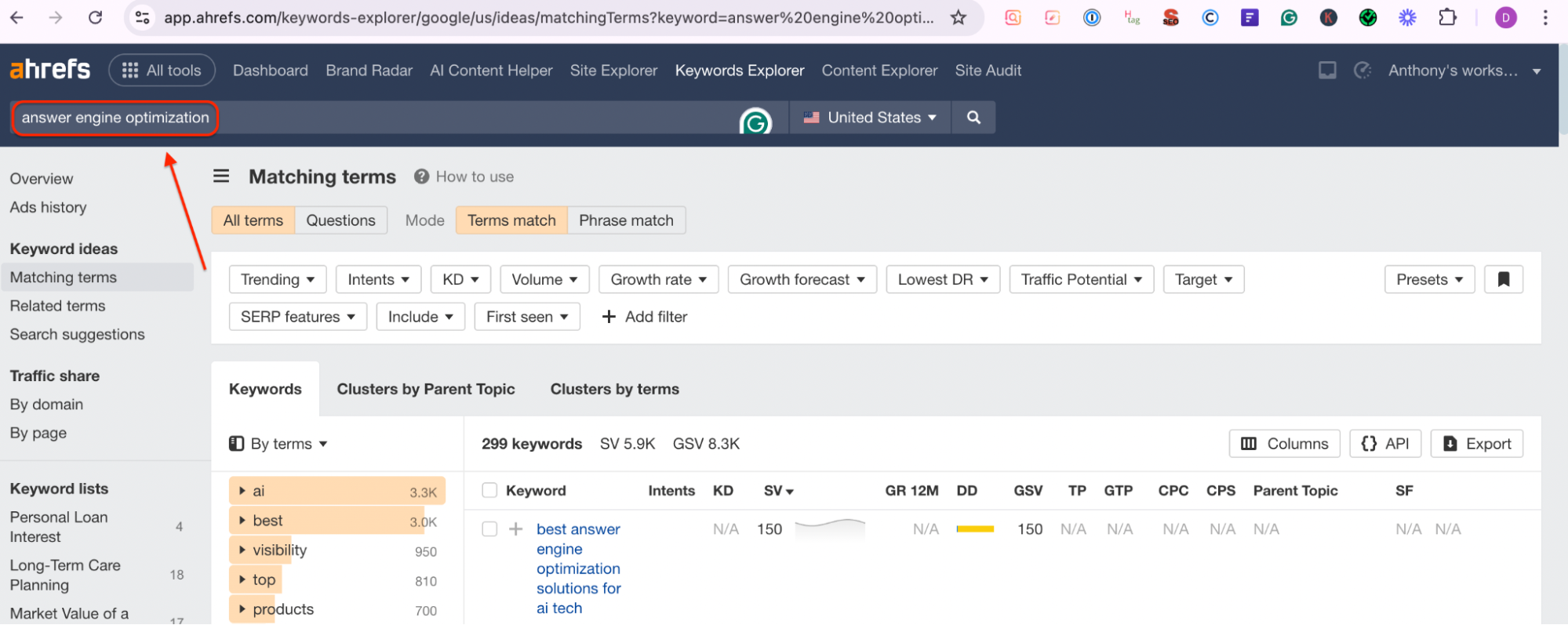
Once you’re in, click on Matching Terms and switch over to the Questions tab. Boom—now you’re looking at all the real, question-style searches people make, like “what is AEO,” “how to use answer engines,” or “can I apply AEO to local SEO?”
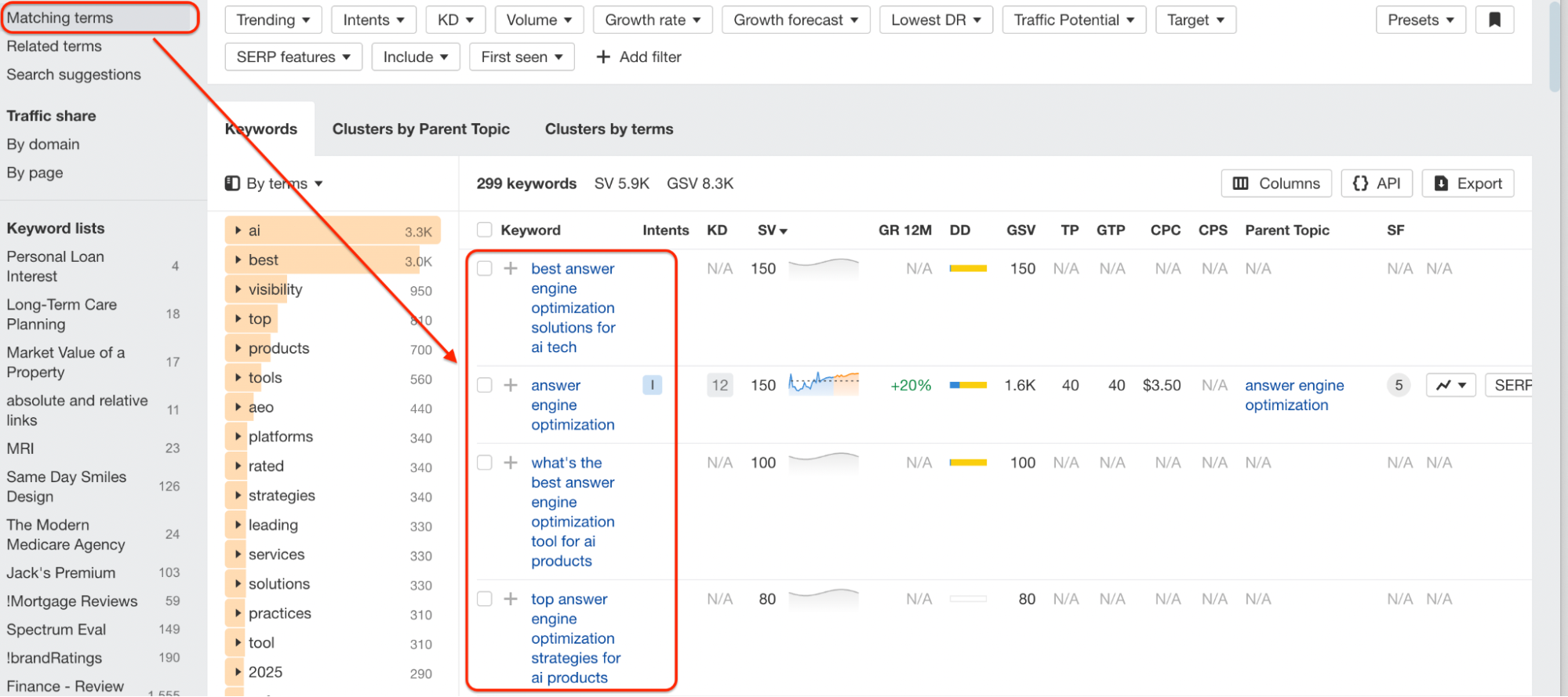
Keep an eye out for long-tail questions that show intent, especially ones that start with “how to,” “why does,” “what’s the best way to,” or “can I…” These are perfect for ranking in featured snippets and voice search results. You can sort by search volume and keyword difficulty to find the ones worth targeting.

Structure Content to Lead With Value
No one wants fluff. Not users, not AI, not answer engines.
To front-load value:
- Answer the question in the first few lines
- Use H2s, bullets, and a site structure that supports scanning.
- Serve both skimmers and explorers.
Your blog should work like an innovative menu—grab attention up front, then feed the curious more.
Implement Structured Data Markup
Think of structured data as your content’s translator—it tells search engines exactly what each section of your page means. While humans can understand your paragraphs and bullet points, Google needs a little extra help. That’s where Schema markup comes in.
Using the right Schema types can turn your plain text into rich, clickable results on Google—and even power voice assistants and AI-driven platforms. Here are some essential types to use:
FAQ Schema
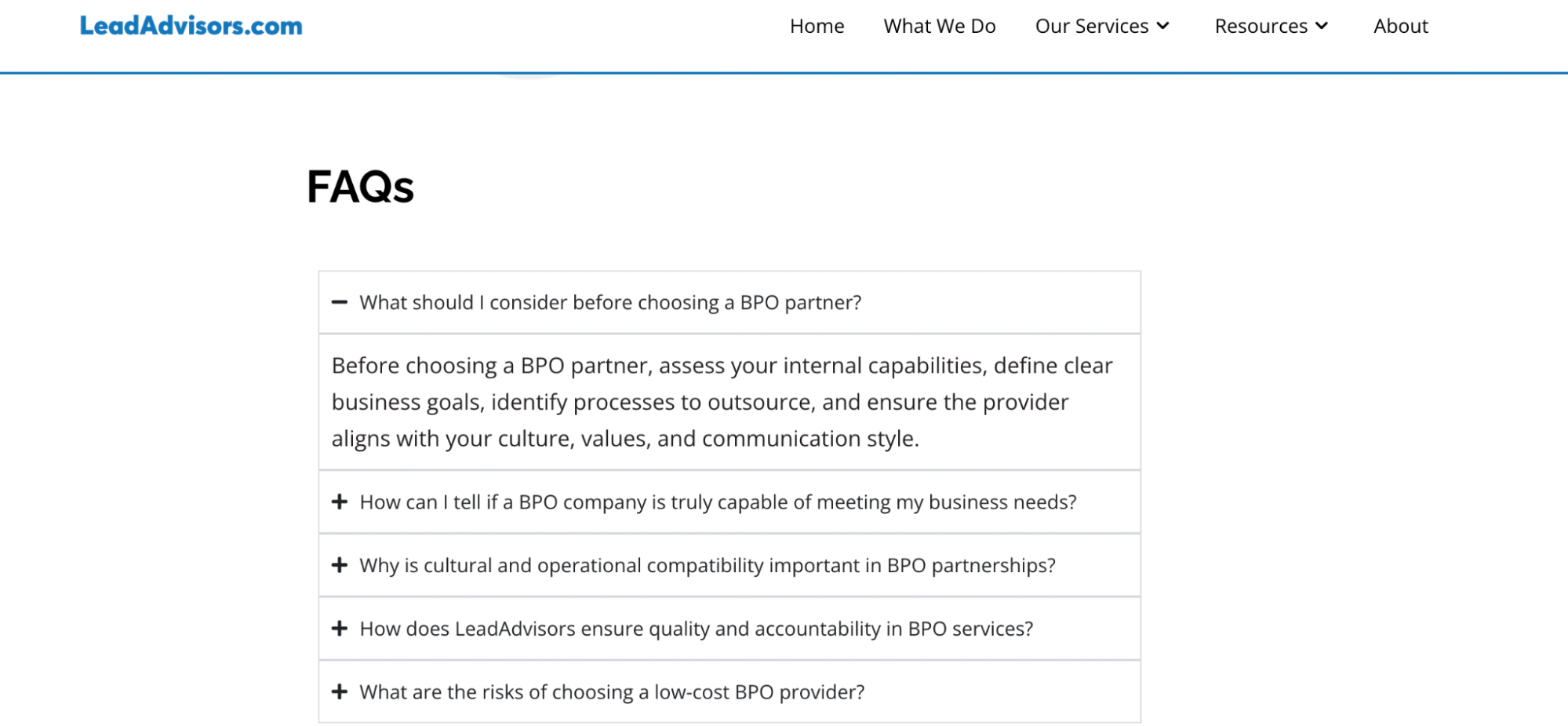
Perfect for pages with a list of common questions and answers. This schema tells search engines that your content is structured to help users quickly find specific information.
Example:
If your content has a section like:
Q: How do I optimize content for answer engines?
A: Start by focusing on user intent and structured data…
Wrap that in FAQ Schema, and it can appear in Google search as an expandable Q&A block, improving your visibility and click-through rate.
Bonus Tip:
- Use it on product pages, blog posts, and service pages to address objections or explain features.
- Great for showing multiple FAQs in a compact layout directly in the SERP.
How-To Schema
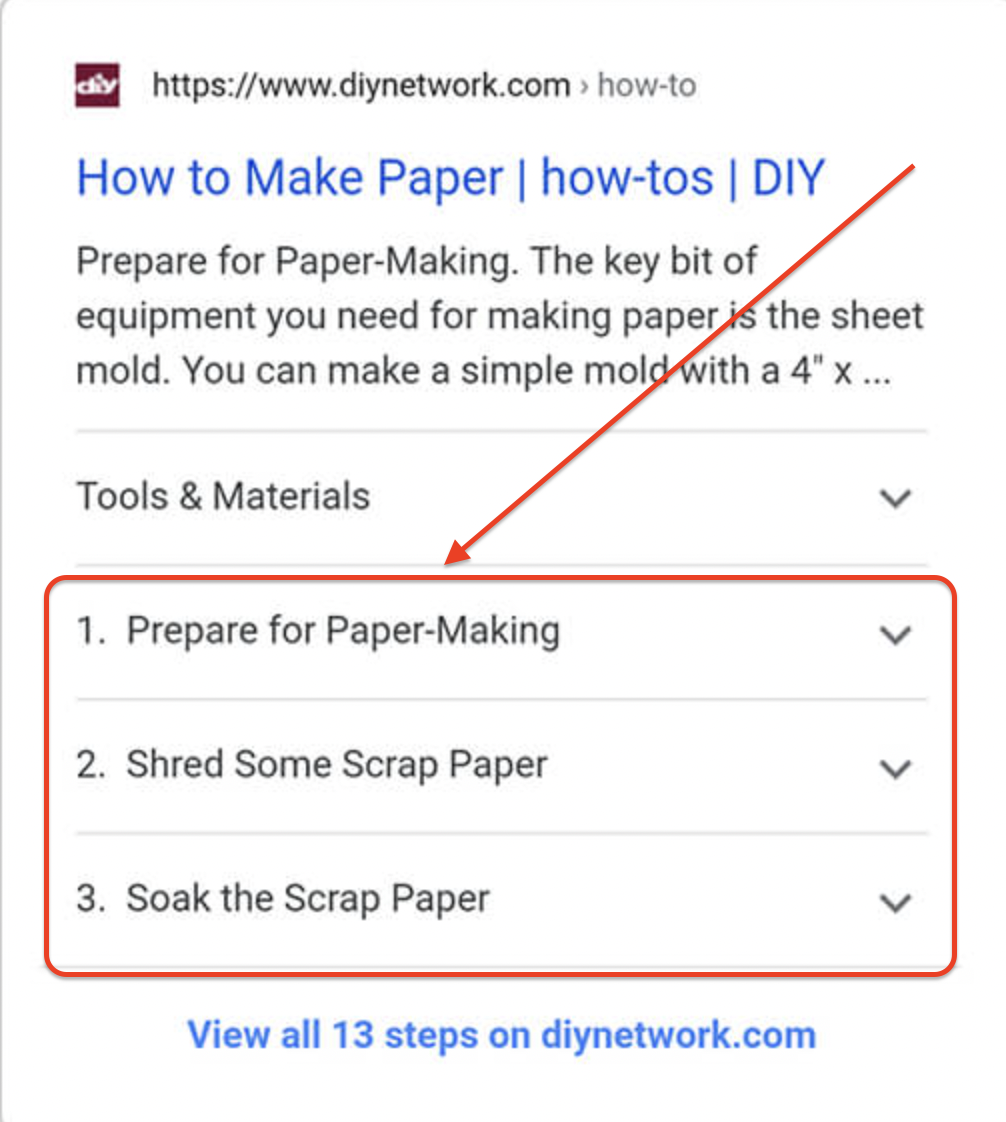
Use this when you’re guiding users through a step-by-step process. This schema helps search engines understand that your content is instructional, and it often leads to rich snippets with visuals like numbered steps or image thumbnails.
Example:
If you’ve written a tutorial titled “How to Implement AEO in 5 Steps,” apply How-To Schema to each step. Google may display it as an interactive list that users can expand right from the results page.
Why it matters:
- Increases engagement before the click
- Optimized for both desktop and mobile search
- Boosts voice assistant compatibility (Siri, Alexa, Google Assistant)
Pro Tip:
To enhance the markup’s effectiveness, include clear headings for each step (Step 1, Step 2…, etc.) and, if possible, use visuals.
Q&A Schema
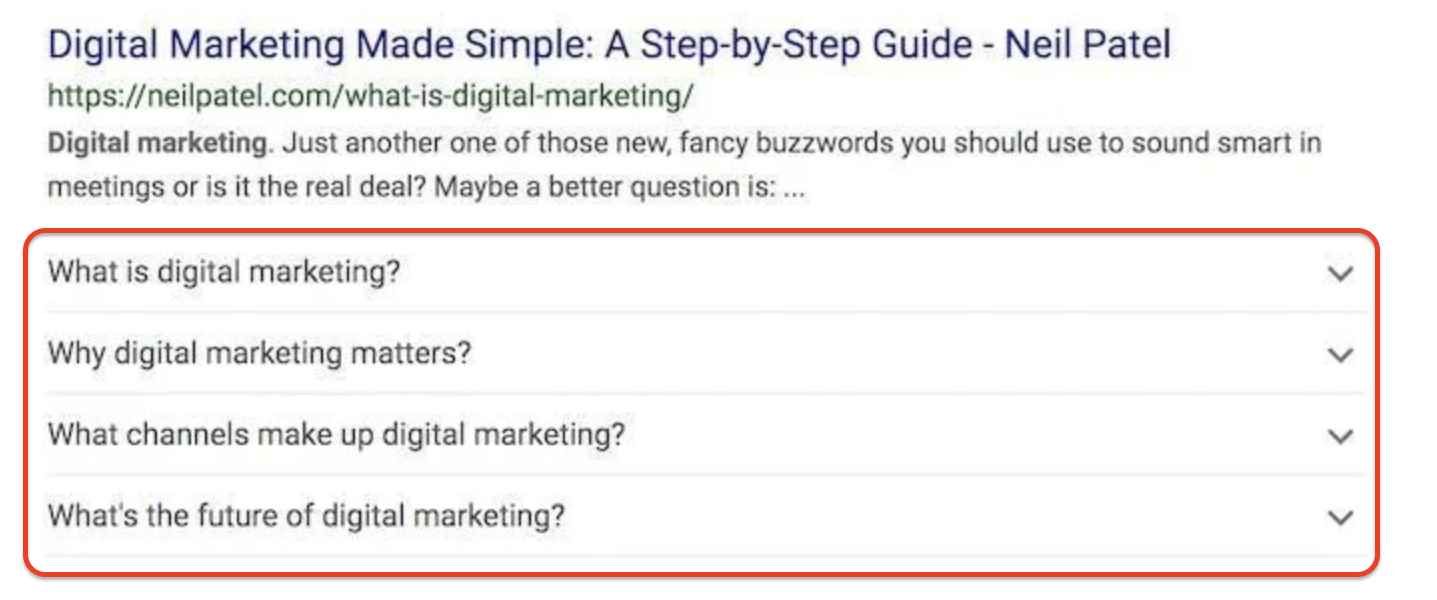
Ideal for discussion-style or expert response content. Unlike FAQ Schema (which is one question, one answer), Q&A Schema supports multiple user-generated answers or expert opinions.
Example Use Cases:
- Forums like Reddit or Quora-style pages
- Blog posts with a question prompt and multiple expert replies
- Webinar or AMA (Ask Me Anything) summaries
Why use it:
- Great for capturing long-tail conversational queries
- Supports Google’s understanding of user engagement and depth
- Potential to appear in Google’s Knowledge Panel or voice search responses
Implementation Tip:
Use the Q&A Schema only when there is more than one answer to a single question; otherwise, stick to the FAQ.
Optimize for Voice Search and AI Summaries
Voice search assistants and AI tools don’t want jargon—they want clarity.
To win those spots:
- Use conversational, natural phrasing
- Include “near me” and local references.
- Think about how your target audience would ask aloud
Voice assistants often use short, well-formatted sections. Your goal? Provide the easiest, most explicit content to extract.
Build Topical Authority and Content Clusters
One blog isn’t enough. If you want to dominate, build a whole cluster:
- Create a comprehensive pillar post (e.g., “Complete Guide to AEO”)
- Support it with focused subtopics:
- “How Voice Search Impacts AEO”
- “Best Schema Types for Answer Engines”
- “AI Search vs. Traditional SEO”
Link everything with internal linking and interrelated FAQs to cover both breadth and depth—so when users interact, your content is already waiting.
How AEO Powers the Full Buyer’s Journey
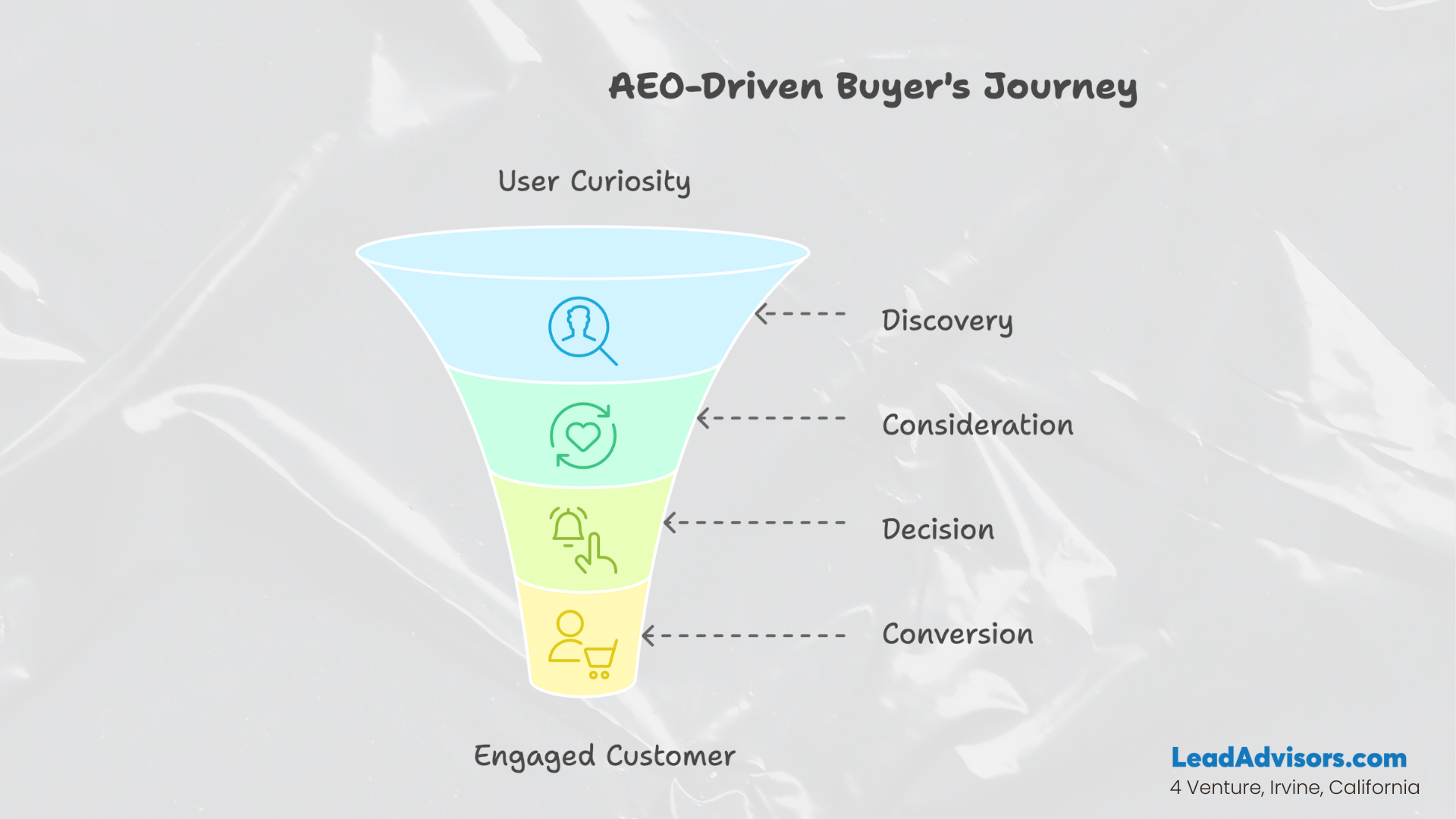
Answer Engine Optimization isn’t just a top-of-funnel discovery tactic. Instead, it’s a full-funnel approach that serves users from curiosity to conversion. This is how AEO matches to the various nodes of the buyer’s journey and provides relevant answers based on the user’s behavior or intent.
Stage 1: Top-of-Funnel — When Curiosity Strikes
By now, the user isn’t buying — they’re Googling. They’re trying to get their heads around something new, questioning the basics, like:
-
What is AEO?
-
How does voice search work?
-
What are AI-generated responses?
That’s the magic of AEO: it doesn’t require the user to scroll. It delivers instant answers — through featured snippets, informative cards, and voice results — to help you get your answer more quickly. That involves creating content such as glossary entries, FAQ hubs, and 40-word-or-less answers that land in “position zero.”
📌 Consider this your “first impression” phase. You’re not selling yet — you’re simply showing up and establishing trust quickly.
Stage 2: Mid-Funnel — When Curiosity Becomes Consideration
Now, the user’s intent shifts. They’ve heard the term, understand the basics, and want comparisons, evidence, and next steps.
Here’s what they’re looking for:
-
AEO vs SEO
-
Best tools for AEO
-
AEO examples by SaaS companies
Your job? Show up with depth. Create blog posts where you delve into each question by itself. You should use clear subheadings, comparisons of tools, quotes from real users, and snapshots of case studies. So don’t just share information. Provide context.
And if they click and scroll? That’s measurable engagement — and a retargeting opportunity.
Stage 3: Bottom-Funnel — From Interest to Intent
This is the point of raising the stakes. The user is getting out of the learning phase. They’re in decision mode. Queries look like:
“AEO services pricing”
“Top AEO consultants near me”
“Buy AEO software”
Now it’s time for answer-first pages that are clear, confident, and conversion-focused. Employ headlines such as “Pricing Plans That Grow with You,” and sprinkle in trust elements — client testimonials, expert bios, and quick-hit FAQs.
Drop the fluff. Each word on this page should get the user closer to yes.
Final Stage: AEO as Your Conversion Engine
For most businesses, the story ends when a user lands on a product page. But AEO can continue to work behind the scenes.
Here’s how:
-
Repurpose blog posts into gated ebooks or checklists
-
Put up mini-FAQs in strategic product and service-related pages
-
Study how users ask questions, then mimic the very words they use in your email CTAs and Google Ads
The better you can mimic the user’s language in your answers, the easier the transition will be.
How to Influence AI Answers
How about seeing your content as the one that AI tools such as ChatGPT, Gemini, or Perplexity would quote in their responses? Here is a step-by-step blueprint to ensure that happens.
Step 1: Understand How GenAI Models Learn
AI language models are trained on reams of public data, including blog posts, product pages, Reddit threads, and online FAQs. They don’t “think” like humans; they identify patterns in the text and reiterate what they think are the most likely, clear, and pertinent patterns.
Translation: If your content is already out there and well-organized, it may be picked up by AI models.
Step 2: Reverse-Engineer the AI’s Answers
Ask the AI the question you are targeting before you make your content.
For example:
Ask ChatGPT, “What is Answer Engine Optimization?”
Then look at:
-
How the answer is structured
-
What examples does it give?
-
To what sources (if any) does it appeal?
-
What info does it leave out
Use this information to deepen or broaden the answer with new statistics, expert quotes, or visualizations and publish it on your site.
Step 3: Create Answer-Focused Content
When you know what the AI models are saying now, you can aspire to do better.
Here’s how:
-
Write direct, straightforward replies to common questions
-
Include a nugget, a stat, a hook, from an expert point of view (expert POV) to gain information.
-
Structure your content in AI-friendly formats: FAQs, bulleted lists, and short paragraphs.
Front-load your content with value—AI adores content that answers first.
Step 4: Use Structured Data to Reinforce Meaning
AI crawlers (and Google) rely on schema markup to understand your content’s intent.
-
Add your FAQ schema in the Q&A sections.
-
Utilize How-To or Q&A markup if applicable.
-
Provide dates when the document was published, the author’s profile, and citations.
Structured data helps AI recognise your content as quality and value.
Step 5: Publish in Places AI Crawls
There’s more to it than just your blog. AI models draw from a vast array of data, most commonly user-generated content.
To get on their radar:
-
Answer helpful questions on Reddit, Quora, and industry-specific forums.
-
Promote reviews and Q&A on product or service pages.
-
Turn blog posts into FAQs, community posts, and social threads
The more places your content lives, the more chances AI has to see — and repeat — it.
Step 6: Stay Updated and Keep Publishing
AI models evolve. So should your content.
-
Update high-performing posts regularly.
-
Track how AI tools answer new questions.
-
Monitor zero-click or AI-based responses keywords.
It’s the consistency that creates digital trust and influence.
Want to Be the Answer? Train the AI.
In following these steps, the idea is that you won’t just optimize for search — you’ll actually influence the sorts of things AI tools say about your industry. And in a world of voice search and GenAI, that’s the kind of influence that really counts.
Tracking and Measuring AEO Success
If you’re wondering how well your AEO efforts work, you can’t limit yourself to traditional SEO metrics. Refer to the table below to Track, Test, and Tweak your AEO approach successfully:
| Action | What to Focus On | Key Metrics | Tools to Use | Why It Matters |
| Track | Visibility & Reach |
– Impressions – Featured snippet count – Voice search appearances – Zero-click traffic |
– Google Search Console – Semrush – Ahrefs – SE Ranking |
Tracks how often your content is seen, even without a click |
| Test | Answer Formats |
– Click-through rate (CTR) – Dwell time – Snippet acquisition |
– A/B testing plugins (e.g., Optimize) – GSC performance comparison – CMS-based split testing |
Helps identify which content structure gets picked up and clicked |
| Tweak | Optimization & Refinement |
– Keyword performance – Snippet volatility – Answer structure effectiveness |
– MarketMuse – Clearscope – AnswerThePublic – AlsoAsked |
Fine-tunes your content to match current user questions and AI trends |
Bonus Tips:
-
Track the time of your publishing/ updating pages to the extent that it aligns with changes in impressions or snippet gains.
-
Record “People also ask” appearances – these typically derive from AEO-friendly content strategies.
-
Test your top FAQs with voice assistants and see how they are answered.
AEO success is not always about direct conversion; it is about owning visibility in the answer-first world. The more you monitor, test, and adjust, the more your content becomes the authoritative source in AI, voice, and search.
Challenges and Limitations of AEO
Well, the truth is, Answer Engine Optimization (AEO) is not some type of magic fix that gets you instant wins. It may be a race like any other, but it’s also rife with its fair share of curveballs. Here are the major obstacles with which you should be familiar before you jump in with both feet:
No Guarantees of Snippet Placement
The challenge: You do everything right and optimize your content perfectly, but you still can’t get the featured snippet or AI response.
Why?
-
Google’s algorithm is constantly testing diverse results.
-
Voice assistants have a select number of sources.
-
Your response may be paraphrased or rewritten by AI tools with no credit given.
Reality check: AEO means playing the odds, not getting a top spot for sure.
Potential Traffic Loss from Zero-Click Outcomes
The challenge: Being the best answer can lead to, surprisingly, not garnering the click. Indeed, users more often than not are getting what they need from the snippet or A.I.-produced summary and moving on.
Impact:
-
Lower pageviews
-
Shorter sessions
-
Missed CTAs
What you can do: Think about brand visibility, trust building, and top-funnel influence, not just clicks.
Constant Changes in AI Engine Behavior
The challenge: One service that works today might stop working tomorrow. AI engines like ChatGPT, Gemini, or Perplexity grow fast, and we don’t always know how or why.
Symptoms:
-
It’s no longer in the Featured box
-
AI tools that cite various sites or sources
-
Changing tone or structure in voice assistant answers
Survival tip: Keep testing. Keep publishing. Stay adaptable.
Ethical Concerns: Hallucinations & Misattribution
The challenge: AI systems can occasionally create false facts (otherwise known as “hallucinations”) or spread information without adequate source attributions.
What this means for your content:
-
Your brand message may get twisted
-
You might not receive credit even if your work is quoted.
-
Users might be led astray even with your good intentions.
Best move: Provide clearly stated, well-cited, authoritative content. This decreases the possibility of being misquoted and increases the odds of being respected by AI systems.
AEO is potent — but it’s not infallible. It’s the long game — the patience, the trial and error, the open-mindedness.
Consider it more as a visibility and influence strategy. When you arrive at the party with answers — consistently, clearly, ethically — you’re already ahead of the curve.
AEO + SEO: A Unified Content Future
Answer Engine Optimization isn’t an adversary to Search Engine Optimization but rather a complement to it. To succeed in today’s search and AI world, we must think beyond rankings and clicks. We need to think about answers, intent, and discoverability across platforms.
Here’s why both matter—and how they work together:
| Why You Need SEO | Why You Need AEO |
| Helps users find you on Google and Bing | Helps AI tools and voice assistants choose you |
| Optimizes for keywords, links, and rankings | Optimizes for questions, clarity, and structure |
| Drives organic traffic to your site | Drives zero-click visibility across platforms |
| Supports in-depth content and blog strategies | Supports fast answers and FAQ-based strategies |
| Builds domain authority over time | Builds topical trust and instant relevance |
Together, They Create Future-Proof Content
By combining both approaches, your content:
-
Gets discovered by search and surfaced by AI
-
Great for long-form SERPs and instant snippets
-
Meets your users throughout their journey — from scroll to spoken
AEO is not a replacement — it’s your next layer of smart SEO.
Think questions, not just keywords.
Prioritize intent, not just impressions.
Deliver answers, not just articles.
SEO brings people in. AEO keeps you top of mind.
Together, they future-proof your brand in an answer-first world.
Conclusion
In a world increasingly run by AI, brand visibility belongs to those who provide quick, clear, helpful answers, not just SEO-optimized content.
Start small by:
-
Optimizing your FAQs
-
Front-loading your content
-
How to write for AI and voice devices
The shift is already here. Adapt today with Answer Engine Optimization — or get left behind.
In this new era of search, the brands that answer are the brands that win.




